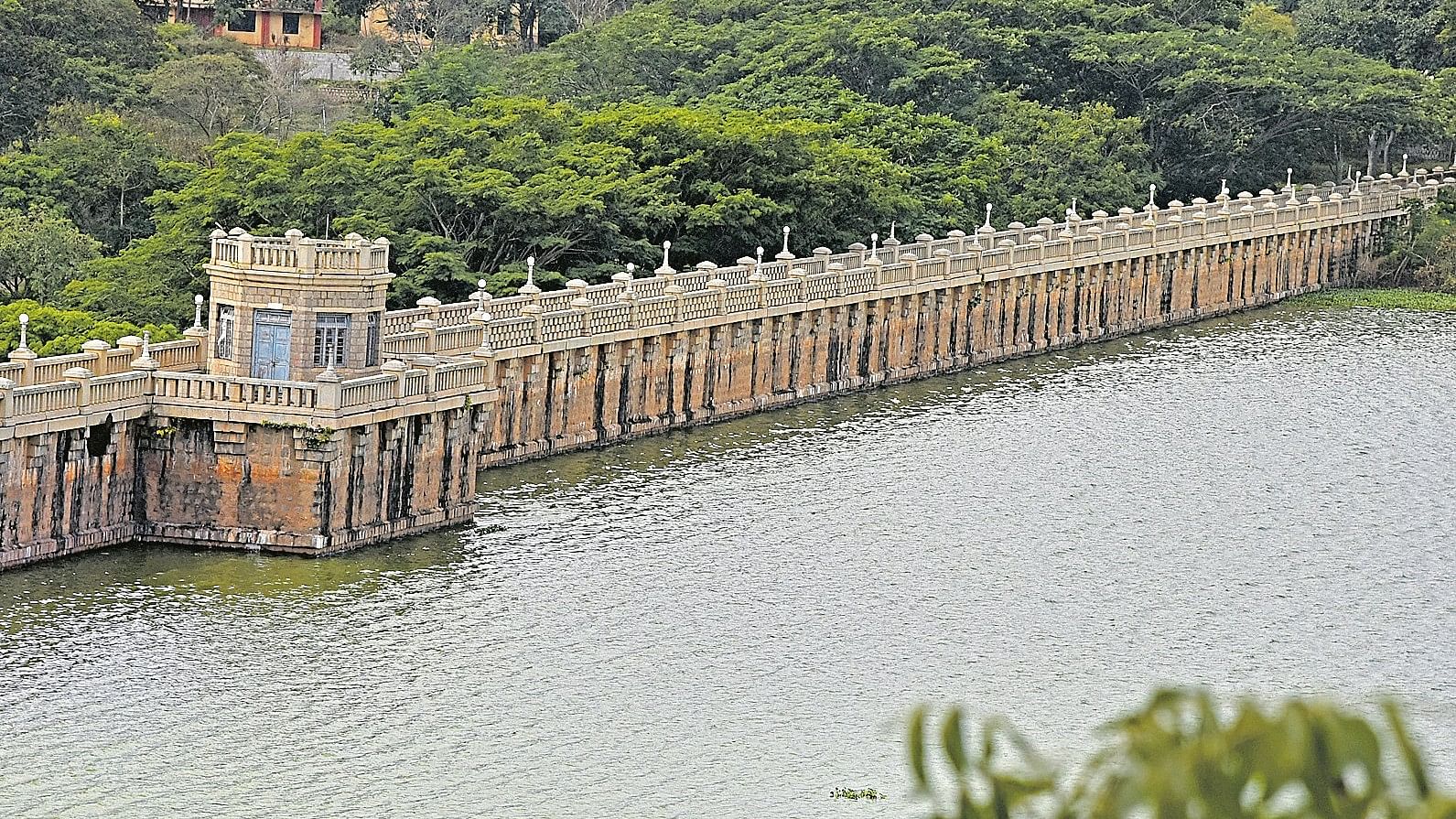
The Thippagondanahalli reservoir.
Credit: DH FILE PHOTO
Bengaluru: The Karnataka State Pollution Control Board (KSPCB) has informed the government that the responsibility of safeguarding the Thippagondanahalli reservoir lies with the urban development planning authorities, including the Bangalore Development Authority (BDA), the Bangalore Metropolitan Region Development Authority (BMRDA), and the Revenue Department.
The KSPCB also clarified that it has "never" attempted to protect illegal structures within the catchment area.
Last year, the state government issued a show-cause notice to the board, requesting an explanation for the violations. In response, KSPCB Chairman Shanth A Thimmaiah defended the board's performance over the past 20 years in enforcing the 2003 government notification aimed at protecting the 1,453 sqkm catchment area of the Thippagondanahalli Reservoir (TGR).
The KSPCB's explanatory note, accessed by DH, stated that it has taken action against non-compliant industries, issuing closure orders to 64 units in Zone 3 (areas within 500 metres of the banks of Arkavathy and Kumudvathi) and four units in Zone 4 (areas within 500 metres to 1 kilometre).
"It is submitted that as far as unauthorised layouts are concerned, the BDA, BMRDA and Revenue Department are required to provide status of action taken for violations. It is also brought to your notice that residential layouts of 10 acres and above are covered under the consent mechanism of the KSPCB and the board has not granted consent to any such unauthorised layouts in the TGR Catchment Area," the chairman said.
Industrial effluents
On industrial effluents polluting the water in TGR, the KSPCB said it has not accorded any consent for operation "to the industries established in the prohibited zones" of the catchment area. "The KSPCB has never shown even a petite inclination of protecting the illegal structures in the TGR Catchment Area," it added.
The government's show-cause notice was issued after the Karnataka High Court pulled up the authorities in a petition over the failure to protect the catchment area. The case has been pending for more than 10 years.
The government is yet to submit its stand on whether or not it will retain the 2003 notification or the one issued in 2019 that reduced the buffer zones.
Sources in the Urban Development Department said the 2003 buffer zones were seen as unrealistic. "Given the demand for development in Bengaluru, there is a need to balance conservation and development. The government will submit its stand before the court," a senior official told DH.